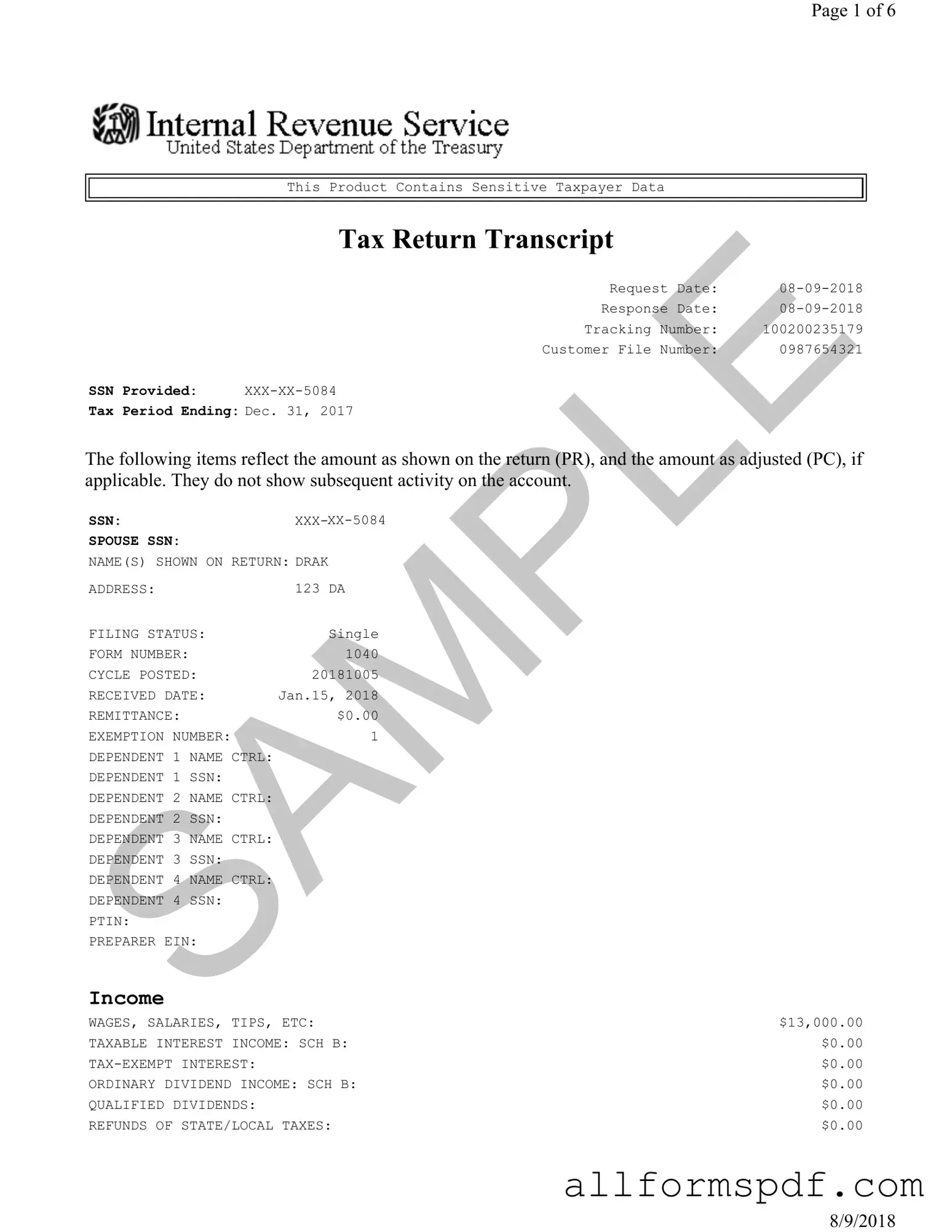Filling out the Sample Tax Return Transcript form can seem straightforward, but there are common mistakes that people often make. Understanding these pitfalls can help ensure that your tax return is processed smoothly and accurately.
One frequent error is not including the correct Social Security Number (SSN). The SSN is a crucial part of your tax return, and any discrepancies can lead to delays or complications. Always double-check that the SSN provided matches the one on your official documents. This small detail can save you a lot of headaches later on.
Another mistake involves the filing status. Selecting the wrong filing status can affect your tax liability and eligibility for certain credits. For instance, if you are married but file as single, you may miss out on significant tax benefits. Be sure to review the criteria for each filing status before making your selection.
People also often overlook the importance of accurately reporting income. Whether it’s wages, business income, or other sources, every dollar counts. Misreporting your income can lead to penalties or an audit. Make sure to gather all relevant documents and verify that your reported amounts align with what’s on your W-2s or 1099s.
Additionally, many individuals fail to account for adjustments to income. Deductions like educator expenses or self-employment tax deductions can significantly reduce your taxable income. Not including these adjustments means you could end up paying more tax than necessary. Review your eligibility for these deductions carefully.
Another common oversight is neglecting to sign and date the form. A tax return without a signature is considered incomplete and can result in delays. Always remember to sign and date your return, as this confirms that the information provided is accurate to the best of your knowledge.
Finally, some individuals forget to keep copies of their submitted forms. This can be a problem if questions arise later or if you need to reference your previous filings. Keeping a copy of your tax return is a good practice that can help you in the future.
By being aware of these common mistakes, you can take steps to avoid them. A careful review of your tax return can lead to a smoother filing process and potentially save you money in the long run.
